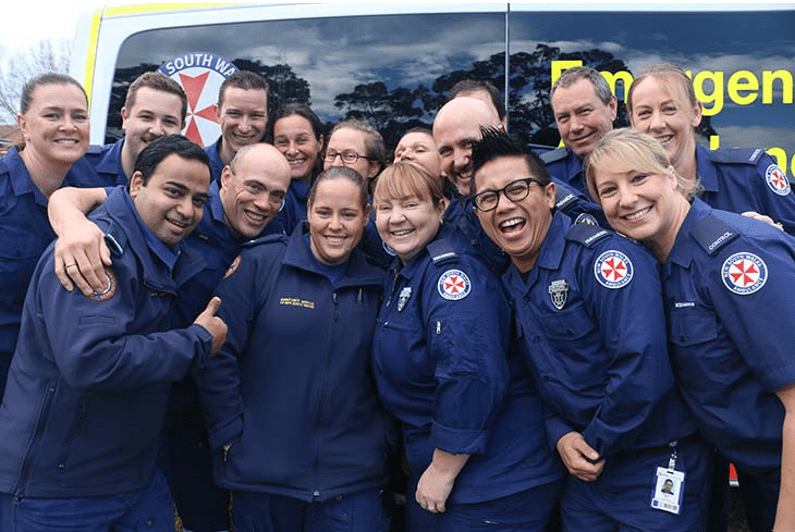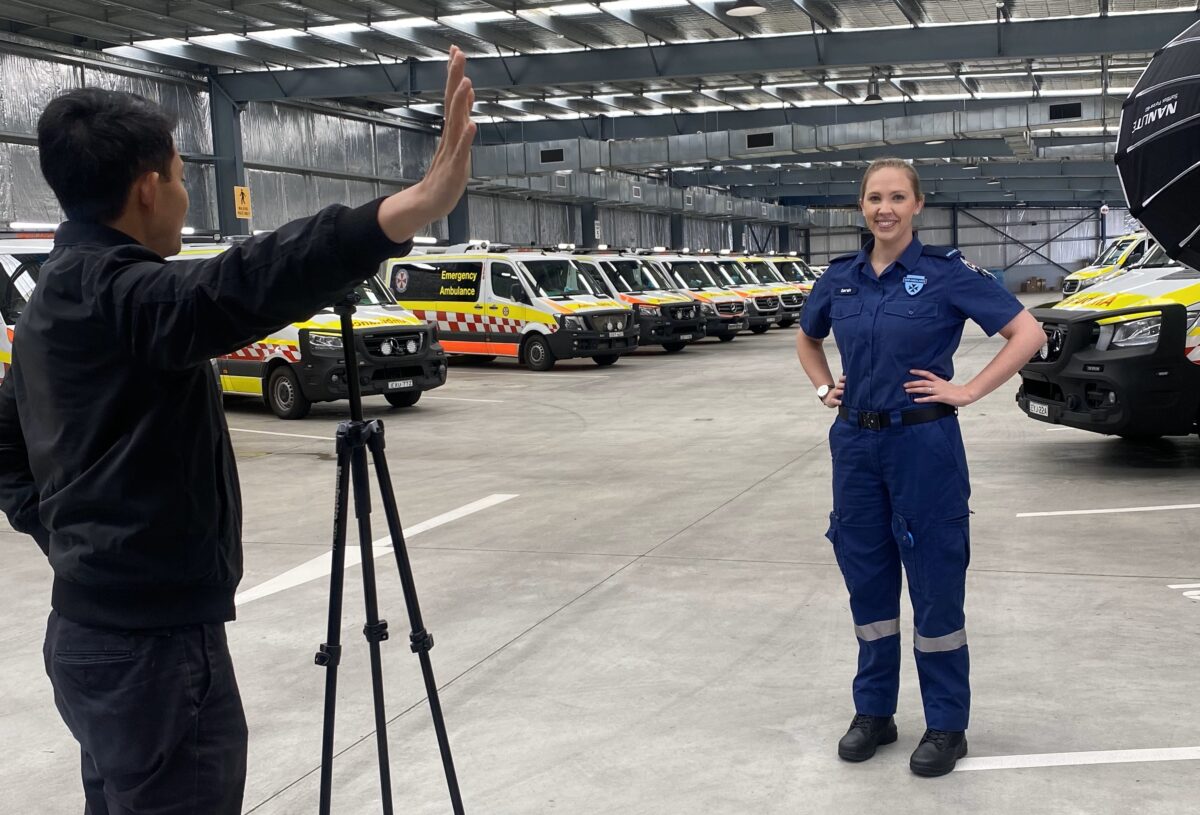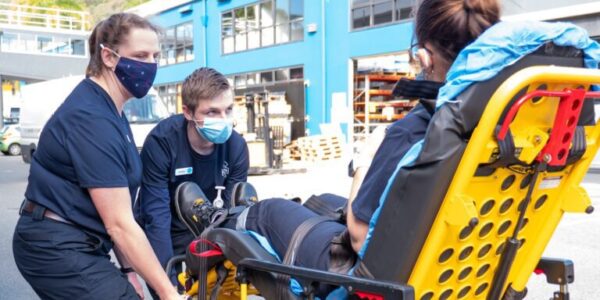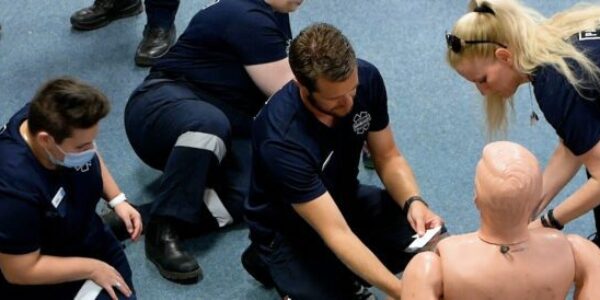Re-published 1st December, 2023.
NSW Ambulance is a diverse organisation, employing over 6,000 individuals across 220 ambulance stations and 18 Paramedic Response Points. Between 2020 to 2021 alone, more than 1,265,000 ambulance responses were recorded, with close to 760,000 patients transported*.
*Source: NSW Ambulance (2023)
Deciding to choose a career with NSW Ambulance can offer you the personal reward of being part of one of the largest ambulance services in the world, servicing a population of more than 8 million*.
*Source .idcommunity
If you’re interested in gaining employment with NSW Ambulance as a paramedic, make sure to read on. You may be surprised to know that you don’t always need to have a bachelor’s degree beforehand!
How can I become a Paramedic with NSW Ambulance?
There are three pathways you can take to become a paramedic with NSW Ambulance:
- Trainee Paramedic (Vocational) pathway
- Paramedic Intern (Graduate) pathway
- Qualified Paramedic pathway
In this blog, we’ll discuss option 1, the “Trainee Paramedical (Vocational) pathway”.
Australian Paramedical College (APC) are proud to offer our students and graduates a direct pathway to apply for this opportunity, which can allow you to work with NSW Ambulance as a Trainee Paramedic whilst gaining automatic entry in a Bachelor of Paramedicine or Clinical Practice.
The universities that currently offer these courses in NSW are the University of Tasmania, Charles Sturt University, University of Western Sydney and Australian Catholic University.

*Image: NSW Ambulance.
What do I need to do to become a Paramedic?
Becoming a Paramedic is an extremely exciting and hard-earned position, but something that does not come overnight. Since 2018, the Paramedicine Board of Australia requires individuals to be registered to legally bear the title ‘paramedic’ in Australia.
To be qualified for registration, individuals must:*
- Complete a Bachelor of Paramedicine (or similar).
- Hold a Paramedicine qualification that is equivalent to, or based on similar competencies.
- Have registered (before 2018) as a practising paramedic in Australia under the National Law.
*Paramedicine Board (2023)
What is the Trainee Paramedic (Vocational) pathway to work with NSW Ambulance?
This pathway is unique as it allows individuals to work with their jurisdiction’s ambulance service without holding a tertiary qualification (bachelor of paramedicine).
The pathway can be excellent to undertake for individuals who may not have a high enough ATAR to qualify for direct entry at university or want to secure employment with NSW Ambulance before commencing a 3-4 year long bachelor’s degree.

APC Diploma Graduate, Sarah Sgroi who is currently completing the Trainee Paramedic (Vocational) pathway with NSW Ambulance.
What is the eligibility criteria to apply?
To be eligible for the Trainee Paramedic Pathway with NSW Ambulance you must fulfil both sets of the following criteria:*
NSW Ambulance criteria:
To be eligible to apply for the pathway, you must be able to say YES to the following:
- Be an Australian or New Zealand citizen, an Australian permanent resident or on a bridging visa to permanent residency.
- Be over 18 years of age
- Currently hold, or are eligible to obtain an unrestricted light rigid manual drivers license within three months of commencement.
- Have a minimum of six demit points remaining on your driver’s license and no cancellation of your license within the last two years.
- Be medically fit.
- Expect to work rotating shift work, including night shifts, weekends and public holidays.
- Be willing to undergo psychometric testing to ensure fulfilment of performing the inherent requirements of paramedic duties.
- Demonstrate willingness to be posted to ANY branch location in NSW at the direction of the Commissioner of NSW Ambulance.
University criteria:
You must also fulfil one (or more) of the below university criteria:
– Have completed a high school certificate with an ATAR of 75 (or higher – including adjustment factors) or equivalent.
– Successful completion of four or more university-level subjects (AQF-level associate degree or higher), demonstrating a reasonable prospect of success through the Grade Point Average (GPA) gained in these studies.
– Completed AQF Certificate IV or higher-level qualification of the HLT51020 – Diploma of Emergency Health Care, or the HLT41120 – Certificate IV in Health Care.
– Have completed a tertiary preparation course from an Australian University (or an accredited provider), demonstrating a reasonable prospect of success through the Grade Point Average (GPA) gained in these studies
– Completed a course at university Diploma level or higher at any Australian higher education provider (or equivalent overseas qualification)
*Source: NSW Ambulance (2023).
* NSW Ambulance advertises positions for this program intermittently, with no guarantee it will be ongoing and no guarantee of the number of places available. They also may change the eligibility criteria at any time. Therefore, it is best to contact NSW Ambulance directly to discuss their employment entry pathways.
Wishing to apply for this pathway?
As outlined above, to apply for this pathway, individuals must be able to fulfil at least one of the four university criteria – one of which is holding a Certificate IV or high-level qualification.
Australian Paramedical College is proud to offer not only the HLT41120 – Certificate IV in Health Care, but also the HLT51020 – Diploma of Emergency Health Care to individuals who may be wishing to start a career in paramedicine.
Self-paced and offered via a blended learning model, APC’s courses are perfect for individuals who have a passion for emergency healthcare, but may not have the time or finances to take the dive into a Bachelor of Paramedicine (or similar) at university just yet. Now also being able to have the chance to apply for NSW Ambulance’s Trainee Paramedic (Vocational) pathway, studying at APC has never been more appealing.
To take the dive and start a career in paramedicine, click here to lodge an application. Having trained over 1,000 individuals within the pre-emergency healthcare sector has named us as Australia’s leading education provider of emergency and non-emergency healthcare.


